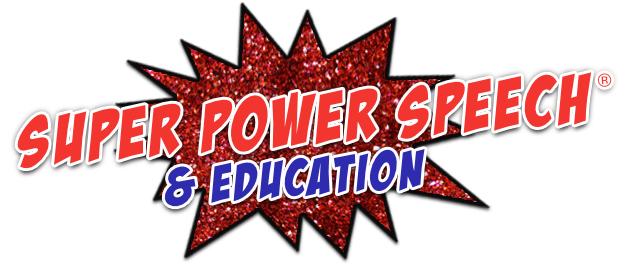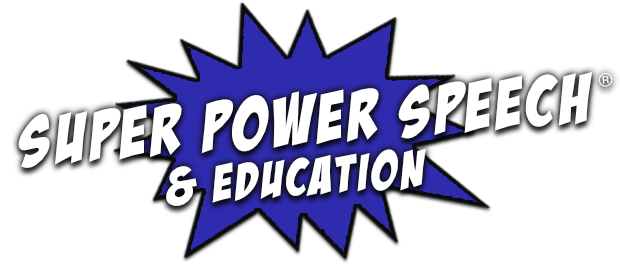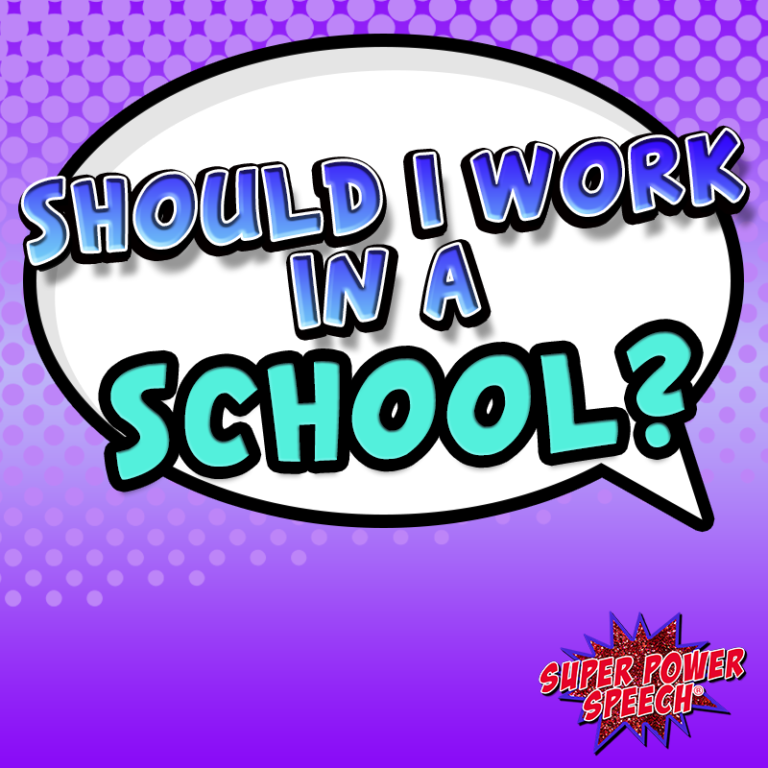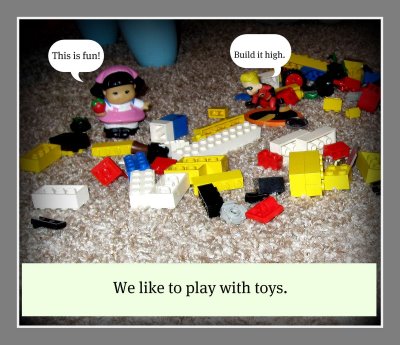Best Practice for Articulation
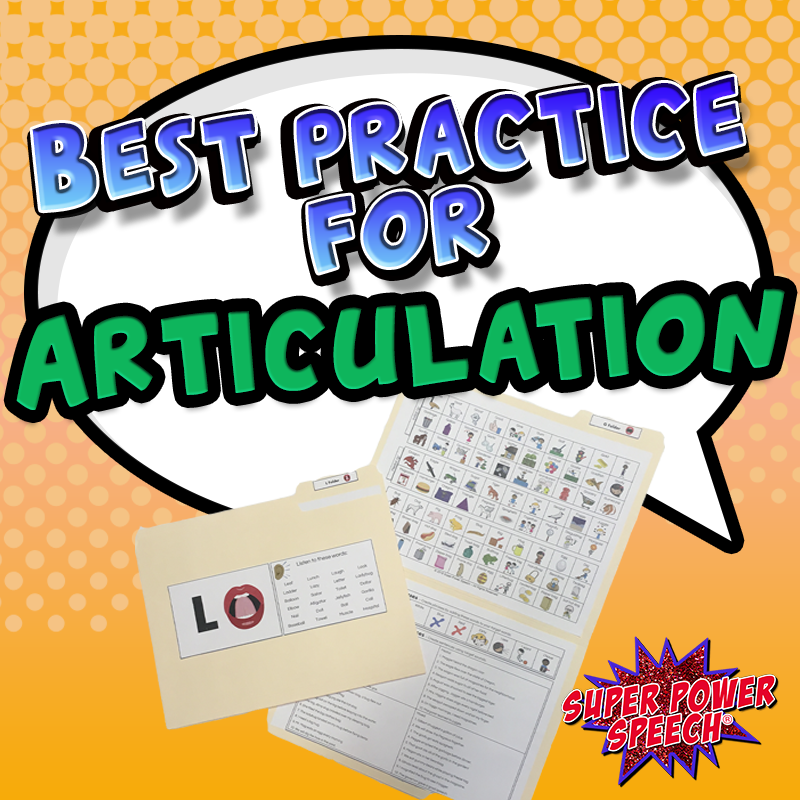
I don’t know about your speech pathology program, but I really wish I had taken a good evidence-based course in speech sound disorder treatment. When I accidentally fell into the role of school-based SLP, I had no background on how to do articulation therapy. So I looked to my right and my left and started doing what everyone else was doing – repeated word therapy.
It was only after getting over the 10 year “what the heck am I doing?” phase that I began really questioning my practice.
re there other ways to do articulation therapy?
Speech sound disorder progression
According to ASHA’s practice portal (n.d.), the progression for most speech therapy for sound errors includes:
- Establishment – eliciting the sound consistently
- Generalization – using the sound correctly at more challenging levels such as syllables, words, phrases, and conversation
- Maintenance – correctly using the targeted sounds with automaticity and through self-monitoring
Treatment strategies for articulation
ASHA’s practice portal (n.d.) also reviews strategies for speech therapy are determined by the clients’ present levels, needs of the client, frequency/intensity of treatment, and goals of the client/parent. Fey (as cited in ASHA’s practice portal) summarized these strategies as:
- Vertical –
practice of one to two target sounds until goal level is reached then moving onto new target sounds - Horizontal – less practice on multiple targets (either between or within therapy sessions)
- Cyclical – incorporating both horizontal and vertical strategies by practicing on targets for a predetermined time period before moving to another target
Articulation therapy approaches
Common approaches to articulation therapy are reviewed within ASHA’s practice portal (n.d.). I was able to find the original studies referenced (with the exception of Hodson, who wrote books and not many journal articles) and summarized them below (note, not all of these approaches have sufficient evidence to yet be determined “evidence-based”):
- Minimal pairs (Weiner, 1981) – In minimal pairs therapy, the focus is on words that differ by only one phoneme or feature and have different meanings. Examples include “tick” vs. “stick”, or “key” vs. “tea”.
- Maximal oppositions (Gierut, 1989) – Contrasting from minimal pairs, maximal oppositions approach consists of contrasting sounds with two or more differing features (voice, placement, manner). Examples include “sat” vs. “mat” or “suit” vs. “boot”.
- Core word production (Dodd, Holm, Crosbie, & McIntosh, 2006) – Core word approach does not have a goal of correct speech sounds. Rather, treatment focuses on consistent production of pre-determined words used within the individual’s functional communication.
- Cycles approach by B. Hodson (as cited in ASHA’s practice portal) – In Hodson’s
books she describes treatment cycles of 5 to 16 weeks work on one or more phonological patterns (such as “stopping”). After each cycle is complete, a new phonological clients’ is addressed. Cycles are repeated until there are no longer developmental phonological processing errors. - Speech sound perception (Rvachew, Rafaat, & Martin, 1999) – This treatment approach incorporates auditory bombardment and judgment about correct/incorrect sound production. Results from this study conclude that there is a probable correlation between stimulability and speech sound perception on treatment results, however, the evidence is unclear.
What did I learn from searching ASHA and the original research studies?
I determined that my years of articulation therapy have actually been on the mark. I usually begin new targets with speech sound perception and then establish correct production at the phoneme level. I move briefly onto minimal pairs. At that point, the client and I begin either vertical or cyclical approaches to therapy. We continue with this therapy through the generalization phases of therapy up to the conversation level.
Although with some clients I continue therapy until maintenance has been achieved, this is not the norm. Within the school setting, the educational impact of articulation disorders is minimal by the conversation level. In this blog post, I discuss how I decide the best time to dismiss from speech therapy services.
Materials that assist me in providing evidence-based articulation therapy focus on auditory bombardment, repeated words in all positions of words, reading exercises focusing on target sounds and conversational prompts. I especially love materials that include crafts, coloring, or other ways to keep little hands busy while their peers are working on their sounds.
The following are articulation products that I have created to use with my own students and help them reach their articulation goals:
References
Dodd, B., Holm, A., Crosbie, S., & McIntosh, B. (2006). A core vocabulary approach for management of inconsistent speech disorder. Advances in Speech Language Pathology, 8 (3), 220-230.
Gierut, J. A. (1989). Maximal opposition approach to phonological treatment. Journal of Speech and Hearing Disorders, 54 (1), 9-19.
Rvachew, S., Rafaat, S., & Martin, M. (1999). Stimulability, speech perception skills, and the treatment of phonological disorders. American Journal of Speech-Language Pathology, 8 (1), 33-43.
“Speech Sound Disorders: Articulation and Phonology: Treatment.” American Speech-Language-Hearing Association, ASHA, www.asha.org/PRPSpecificTopic.aspx?folderid=8589935321§ion=Treatment.
Weiner, F. F. (1981). Treatment of phonological disability using the method of meaningful minimal contrast: Two case studies. Journal of Speech and Hearing Disorders, 46 (1), 97-103.
